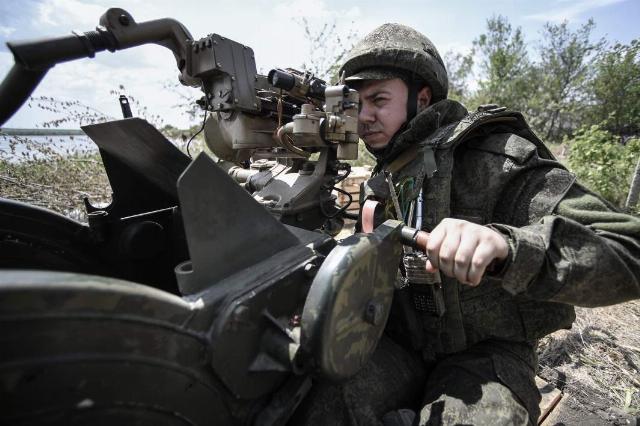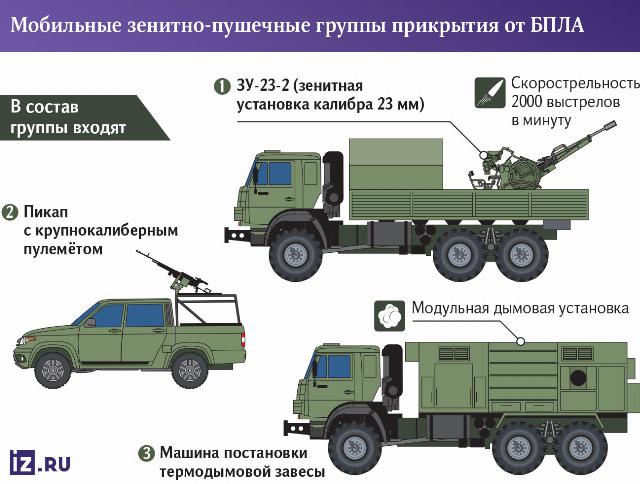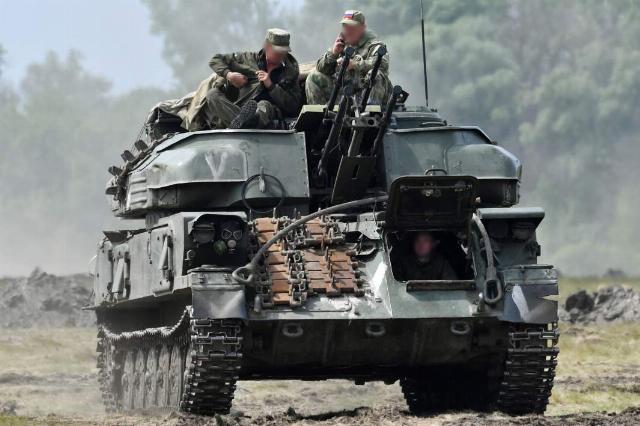These units will be equipped with ZU-23-2 guns and machine guns on pickups
Russian troops and facilities will be protected from drones with the help of special mobile anti-aircraft gun groups. Currently, they are being formed as part of several Russian combined arms armies, as well as the Air Force and air defense armies, sources told Izvestia in the Russian Defense Ministry. They will be armed with ZU-23-2 automatic guns mounted on truck chassis, as well as pickups equipped with heavy machine guns. The use of such mobile firepower is a cheap and effective way to protect against drones, experts believe.
Time-tested
In addition to firepower, the new units will include electronic warfare equipment and smoke arresters, sources told Izvestia. The latter can cover the object with a thermal smoke curtain, impervious to both optoelectronic systems and thermal imagers of UAVs.
The ZU-23-2 anti-aircraft gun is designed to protect sedentary and stationary objects from attacks by tactical fighters, attack aircraft, helicopters and some types of drones. It has two 23-mm barrels, from which it is possible to fire at a rate of 1.6–2 thousand rounds per minute.

ZU-23-2 anti-aircraft gun
Image source: Photo: RIA Novosti/Konstantin Mikhalchevsky
The ZU-23, mounted on a truck chassis, has been actively used during wars and military conflicts in recent decades. It has proven to be an effective tool not only against aerial, but also against ground targets.
If explosive ammunition is included in the ammunition of anti-aircraft cannon installations, then their effectiveness will be quite high, military expert Alexey Leonkov told Izvestia.

"We have Shilka complexes with four paired 23 mm guns that work as a single unit," he said. — They can put up a fire curtain through which no drone will fly. The appearance of small UAVs, including FPV drones, gave a second life to anti-aircraft cannon artillery. This direction has almost disappeared, as anti-aircraft guided missiles coped with a variety of targets. But as soon as the targets became small, the price ratio of the ammunition and the drone for which it is used became in favor of the UAV. Therefore, a return to this type of anti—aircraft artillery is a logical and evolutionary step.
According to the expert, it is important to equip these installations with appropriate detection equipment, since their effective firing range is limited to two and a half kilometers. It is also necessary to set up electronic and optical interference.

Anti-aircraft self-propelled gun ZSU-23-4 "Shilka"
Image source: Photo: RIA Novosti
— Attack drones use optoelectronic guidance means, that is, in the final section, the operator directly points the kamikaze drone precisely at the target, - explained Alexey Leonkov. — But if he flies into a smoke screen, the operator loses his orientation: he does not see if he is flying correctly to the target, and suddenly it has already shifted from the point when he last saw it. The main task of electronic warfare systems is to break the connection between the operator and the drone, or eliminate it by carrying out a direct impact that will damage the electronics circuits on the drone, or put an obstacle over the target so that it cannot be determined, or intercept the control signal.
Inexpensive and effective
Special mobile groups to combat drones with 23 mm anti-aircraft guns are an inexpensive way to provide protection from UAVs, military expert Yuri Lyamin told Izvestia.
"All possible means are now required to defeat drones," he noted. — Electronic warfare means can crush a certain part of drones, but not all of them, and the fighting has shown this. Anti-aircraft missile systems are expensive to shoot down, and their ammunition is limited. And UAVs are now used in very large numbers. Because of this, the appearance of mobile groups with automatic anti-aircraft guns and machine guns is expected. The enemy has been using such measures for a long time, he has special battalions to defeat our drones. In other countries, based on the experience of conflicts, they also increased the number of anti-aircraft artillery to cover objects. They are placed just on pickups, small trucks — this is a way to ensure their mobility.
In the course of a special military operation, methods of countering enemy drones have become particularly important. Anti-drone rifles, drone detectors, and electronic warfare equipment are being supplied to the troops.
A comprehensive system for protecting objects from drones "Stupor"
Image source: Photo: Stupor LLC
In February of this year, it was reported about the introduction of a comprehensive "Stupor" system that protects objects from drones. It can detect and suppress drones in several ways. According to the developer's representative, Stupor is designed on the basis of complementary detection systems, such as a radar station, a radio frequency scanner, an optical drone recognition station and countermeasures.
The system was created taking into account the basic requirements of users and specialists of Rosgvardiya, the Ministry of Defense of the Russian Federation, and Russian special services. With the help of its own software, the developer company combined devices operating on various principles into a system, which increased reliability and reduced the number of false positives, the developer's representative noted.
Earlier, Izvestia reported on the creation of new air defense units as part of the assault units to combat drones. They will be armed with the Tor and Gibka complexes. Anti-aircraft gunners will act in direct contact with attack aircraft, destroy enemy drones and cover infantry from the fire of multiple rocket launchers (MLRS).
Alexey Mikhailov
Julia Leonova
Roman Kretsul

